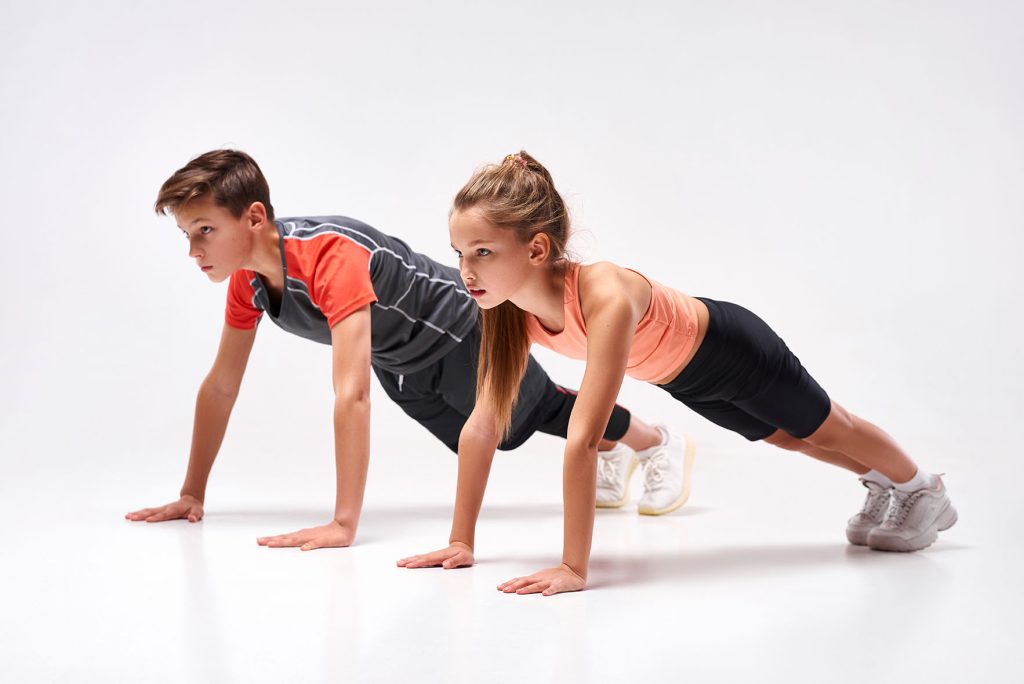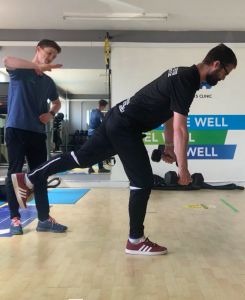Body part or Movement Training?
The reason I’m writing this blog is in reaction to a Tweet I read the other day – and more so the reaction to it. The tweet was aimed at adolescent style training “We need to move away from Body Part Training – More towards Movement Training”. There was SUCH a divide in the comments. This also is perfect timing as we have started running teen fitness classes. So, here goes….
We assume, like us, you have heard from friends, colleagues and coaches about what training is; OR you’ve seen it on social media what a certain person does as their training. Great – that in itself is great information. Well intended and 90% of the time, can be pretty solid info.

Photo – https://www.thetimes.co.uk/article/musclebound-for-glory-tlfftdkpz
Or maybe you’re a coach, and like us in in the Physio/AT world hear or get asked is “What is the best exercises to train *Hamstrings/Biceps/Glutes/Whatever*?” OR we hear “What is the best exercise for *Hamstring Strain/Weak Back/Shoulder Pain/Whatever*?” And this is where often we can see those best intended bits of info muddy the water a bit.
Unfortunately, it is all relative.
So let’s delve a bit deeper to what I mean by this:
Firstly:
What is training?
Why do we do it?
What is it for?
What is functional training and what is not?
To me, training is the act of performing exercises to improve at a task or skill set. That is it in a nutshell, it is when you perform certain exercises, in order to build upon a specific or group of skills.
Training is what you do in the gym, the weights room, on the pitch isn’t it? I believe training, is not the goal. Your training should have a purpose.
Are body part type training styles useful?

Photo – https://julienquaglierini.com/en/2021/02/programme-musculation-rugbyman/
As mentioned above the debate was between body part/muscle training -v- movement training. Are body part type training styles useful? For the right individuals and athletes, they are absolutely the perfect tool for them. Are there problems with this style of training? Also yes. Are they the way forward? I don’t believe so – are we going to throw the baby out with the bath water? ABSOLUTELY NOT!!!
What do your kids need as an athlete?
Have I done this type of training before? YUP! You bet I did. Now, I played every sport I could at a young age, hurling, rugby, football, karate, basketball, swimming. I started body part training from a relatively fit, already fit kid. I had a pretty solid base.
Where are our kids at in 2023, to be honest they’re all over the place. There is a massive spread. There are some super fit, athletic kids but also some very unathletic and uncoordinated kids

So here at APC Physio & Sports Clinic, we are more of a fan of the Movement Training idea, but not alone. I’ll explain as we go further.
What is it about body part training we like/don't like?
At times, it could be argued that if all you do is train in isolation, body part, single joint use, you run the risk of becoming a Frankenstein’s Monster – you become a body of parts if you will. What do your kids need as an athlete? Yes, strength, agreed. But what is largely needed is intramuscular contraction or co-contraction as it’s also known.
This is where muscles contract reflexively together. Now, how do muscles contract? That is via the central nervous system or CNS. How does the CNS know what to do? It works off the information it has gathered over time, or experience. So, if most of your movement has come from isolation movement, single joint exercises, you’re going to become robotic, that Frankenstein’s monster appears. Might be big, might look good, but you may not be able to move as well as someone who does more than muscle/body training on its own.
So, where do we stand ultimately in the argument as physios/AT’s/Coaches?
As I said, I’ve done it. I was doing body part training 5 days a week while I was in the Leinster Rugby set up as a player. I was light for a forward and needed to put on some weight & size. Body part training was what I chose. But, between sets I was doing mobility work, yoga flows, stretches. Between exercises, I was doing some jackal positions mimicking a ruck scenario and movement preparation. I maintained my athleticism by incorporating that into it. Still giving the CNS work to do. Not just the body part training.

- So, where do we stand ultimately in the argument as physios/AT’s/Coaches?
- Are we going to tell kids not to lift?
- Not to do body part workouts?
Notta chance, we should be encouraging them to do what they want to do. We would rather see them doing some training – even if we’re not the biggest fans of it – than have them do no training. But then we can guide them. We can get them doing the athletic movements, the calisthenic movement training styles. We do this through educating them. Maybe reduce the body part movements, adding compound movements perhaps.
The body part training still fits in. We can take these bits and incorporate them into the training then. Do you want to have the “guns”? Great, do your bicep curls. Want to build your back strength – most people do need to, take our heads out of laptops and phones – great, do your rows and pulls.
A combined approach
We can take pieces of every form of training, gymnastics can learn from bodybuilders and powerlifters and vice versa. Dancers from rugby players. Show the benefits, education on every level. Is your training different from mine? Probably. Does it work? Yes! – Great. If it works, it works.
Let’s get people moving well, feeling well, being well. That is our motto. Take the best of everything and use it safely with that purpose we mentioned earlier.